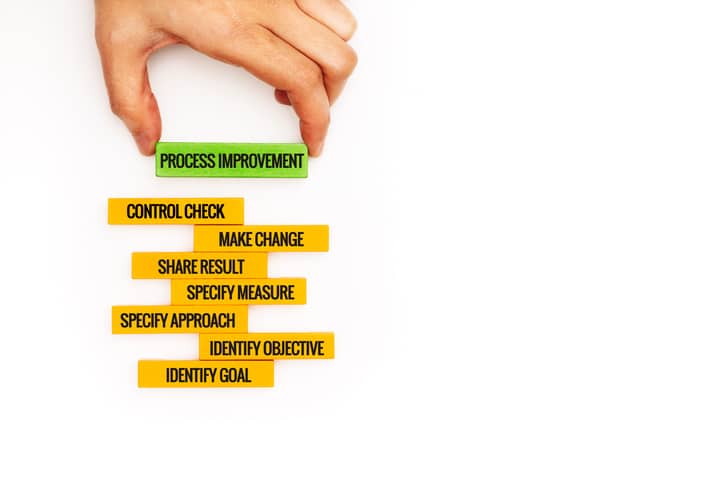Tools of the Six Sigma Control Phase of DMAIC

Last Updated April 5, 2024
Organizations use the proven methods found in Six Sigma to make operations more effective. The main goals include reducing defects, reducing errors, and creating consistent processes with little variation. The methodology used in achieving those goals is DMAIC, which stands for Define, Measure, Analyze, Improve and Control.
DMAIC gives project teams a five-phase process to follow.
- Define – Define the problem that needs solving
- Measure – Assess the extent of the issue and quantify it with data
- Analyze – Use a data-driven approach to find the root cause of the problem
- Improve – Put changes into place that eliminate the root cause
- Control – Maintain the gains you’ve made with the changes
For each phase in DMAIC, Six Sigma offers tools that help teams achieve milestones and keep a project on track.
In the Define phase, a project charter is created, customer needs are defined, and the process is mapped. In the Measure phase, process performance indicators are identified, a data collection plan is created, and the process baseline performance is measured. In the Analyze phase potential root causes are identified, they are narrowed, and critical root causes are selected. In the Improve phase, possible solutions are identified, and final solutions are selected and implemented.
The final step is Control. In this phase, all the work done in the first four phrases culminates in a plan to maintain the gains made by the process improvements put in place. Without keeping valuable changes in place for long-term success, all the work done in the first four steps is wasted.
Tollgates for the Control Stage
Six Sigma tollgates mark the path to success for each DMAIC phase. Villanova University’s Six Sigma Green Belt course teaches students the tollgates for each DMAIC phase, including the following for the Control phase. All three involve making plans that maintain gains for the long term.
- Monitor and control plan – Teams should put a process into place to measure performance of changes going forward. This ensures that people execute the new process correctly and do not slip back into the old way of doing things.
- Create a response plan – The team should create plans to address any issues that might go wrong.
- Develop a continual improvement plan – This plan involves creating steps to ensure that improvements continue to get made because if you stop, competitors will overtake you.
Maintaining gains made by the DMAIC project is the main goal of the Control phase. As taught in Villanova’s Lean Six Sigma Black Belt course, a big part of success in the Control phase involves determining exactly what needs to be measured to ensure gains are maintained. In other words, you must set down the guidelines to know what continued success looks like.
It’s also important that the project team documents the best practices learned so that future teams can apply them. Another key item in the Control phase is to hold a celebration when success is achieved. After all the hard work put in, everyone on a project has earned the chance to pause and enjoy the victory.
Control Phase Tools
Tools and techniques that can be useful in the Control phase include the following:
Standard Work
Now that a new process is in place, it’s important to document exactly how that process should be carried out going forward. This is an extremely important step. Many of the people on the project and employees putting the new process into operation may not be around in the coming years. Standard Work involves creating an extremely detailed, step-by-step guide to doing the process correctly.
Documentation
This is another tool that focuses on the future. Every project learns best practices that can prove helpful to future teams who may investigate similar issues. Teams should take the time to create full reports on the challenges they met and how they overcame them. These reports also provide a useful guide for management in how the new processes work. Documentation also includes preservation of project charters, process maps, customer needs and requirements, and charts and graphs created for the project.
5S
This term stands for sort, straighten, shine, standardize and sustain. It’s a visual plan for how to arrange a workstation to optimize operations when a new way of doing things is put into place. By creating a 5S chart for workstations involved in the new process, teams can help employees better maintain those gains going forward.
Students in Villanova’s Certificate in Lean Six Sigma program learn these tools and others to reach target milestones in every phase of DMAIC. In the Control phase, it’s all about realizing gains, keeping them going forward, committing to continual process improvement, and passing along best practices to future project teams.




